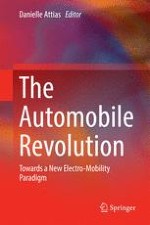2017 | OriginalPaper | Buchkapitel
7. The Autonomous Car, a Disruptive Business Model?
verfasst von : Danielle Attias
Erschienen in: The Automobile Revolution
Aktivieren Sie unsere intelligente Suche, um passende Fachinhalte oder Patente zu finden.
Wählen Sie Textabschnitte aus um mit Künstlicher Intelligenz passenden Patente zu finden. powered by
Markieren Sie Textabschnitte, um KI-gestützt weitere passende Inhalte zu finden. powered by
